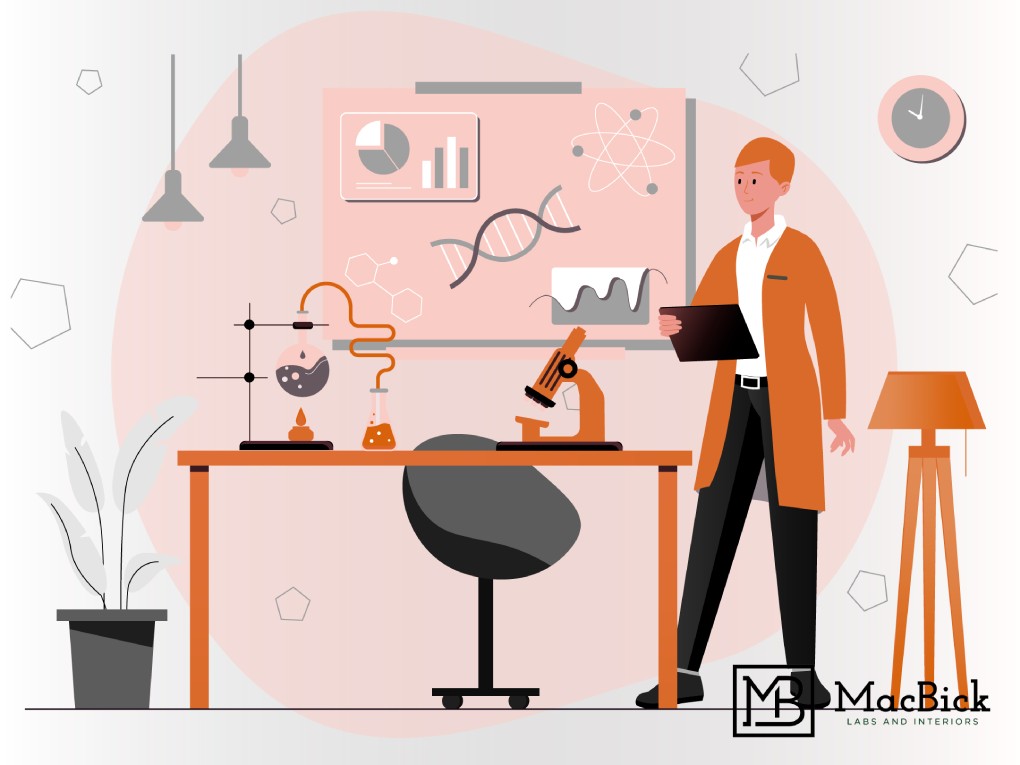How labs utilize space has a direct impact on their abilities to facilitate research and development activities. Each and every detail—from how the space accommodates equipment to how easily teams can collaborate—needs to be considered when evaluating whether a lab is prepared enough to be competitive now and in the future.
With a greater push toward designing agile lab spaces, there are a few things to consider when evaluating whether or not it’s time to transform your lab.
Prioritize Your Research Objectives
Before setting out to redesign your lab in favor of creating a new agile space, it’s crucial to first work with the team on the ground to understand their objectives. Agile spaces are unique to each circumstance; a specific agile design may work for one lab, but impede another.
Ask the following before embarking on a lab redesign:
- What are our goals and desired outcomes from our research?
- What works for our needs now, and what is holding us back?
- How much of our work now (or in the future) will require digital or virtual collaboration?
- How many projects or initiatives will require collaboration across different departments versus staying with closed teams?
- How will we need to accommodate the limits of our machinery or technology and prepare for future advancements or upgrades?
Lab program and project managers will be invaluable resources, but it’s important to also consider bringing in an experienced lab space designer to help key stakeholders through the process by aligning their needs with design possibilities.
Focus On Flexibility
More than ever, flexibility is integral to successful lab work. With a push toward more collaborative scientific efforts and breakthroughs, touting a niche space with a fixed purpose no longer adequately accommodates lab employees’ needs.
If there’s anything you can be sure of, it’s that scientific and technological breakthroughs happen more frequently and in greater numbers. In order to remain competitive, labs must be agile in their responsiveness to the changing landscape. This can be accommodated through mobile and modular work spaces that can easily adapt to the changing lab needs.
While most lab equipment and machinery will likely remain fixed, providing lab employees with adaptable furniture like sit-stand desks and mobile equipment carts will make it easier for collaboration to take place. Instead of organizing around a fixed space, lab employees can instead find ways to collaborate that work best for their immediate needs.
Flexibility offers another benefit: cost savings. The more responsive and flexible the space, the more easily it can be adapted in times of change, saving you money in the long run.
Keep Your Employees In Mind
Building an agile space isn’t just for the benefit of new equipment; it’s for lab employees’ benefit, too. Creating a space more conducive to departmental, team, and individual success will work wonders for productivity.
The key to building an agile space that works for lab employees is to first understand their needs. Focus specifically on how frequently they’ll need to collaborate with each other versus work independently and distraction-free, how much work can be done virtually versus in person, and what types of tasks can be automated versus require complex human problem solving. This help you with space allocation.
Agile Spaces Are Ones That Work For You
At the end of the day, your lab space should work for you, not against you. When the physical restrictions of your space start impeding your lab employees’ productivity and ability to drive research projects forward and make breakthroughs, it’s time to make a change. It doesn’t need to be daunting; it simply needs to be well thought out. With the right mindset and design partner, an agile space is easily achievable.


